Giant Salamanders in Honolulu Become First to Lay Eggs Outside of Japan
The Honolulu Zoo reports that for the first time ever outside of the Hiroshima City Asa Zoological Park, Japanese giant salamanders have laid and fertilized eggs (Hanzaki eggs), which could lead to the hatching of larvae and eventually new mature salamanders.
“It is an honor to have the Japanese giant salamanders at the Honolulu Zoo and to be part of the conservation program,” said Honolulu Zoo Director Linda Santos. “We are very pleased to have gotten this far in the breeding program. Even if these eggs are not successful we are proud of our staff’s accomplishments in getting the animals to feel comfortable in their habitat to breed, and at a very early age for these animals. We are patiently waiting as the excitement builds to hopefully develop larvae and hatch out new salamanders.”
On The morning of Sept. 29 zookeepers at the Honolulu Zoo observed the female Japanese giant salamander in the process of laying her eggs in one of the dens of the habitat. Zookeepers then observed the male appearing to fertilize the eggs. The Honolulu Zoo is the first zoo outside of Japan to have produced these eggs, as there are only four other zoos in the US with Japanese giant salamanders.
“This breeding is epoch-making because of two main points,” said Shinji Minami, director of the Hiroshima City Asa Zoological Park. “First, because the breeding age is so young (the male is 11 years old and the females are 13 years old). Second, this is the first breeding in the world other than Japan.”
The Honolulu Zoo received three Japanese giant salamanders from Hiroshima, Japan (Honolulu’s Sister City) on Feb. 20, 2015. Two females, Panda, age 13, and Maru, age 13, and one male, Peace, age 11. The Japanese Giant Salamander exhibit opened on February 12. Peace and Panda, introduced on May 29, are the breeding pair, sharing a tank. Maru is in her own tank.
Japanese giant salamanders are the second largest salamanders in the world and are endemic to Japan.
“This is a very exciting development at the zoo and I want to thank the hard working team of keepers who take care of our Japanese giant salamanders, who obviously enjoy their new habitat,” said Mayor Kirk Caldwell. “The zoo’s knowledge and love for these reptiles are key ingredients in fostering the kind of environment where something like this is possible. Hopefully, we’ll be able to welcome our new Japanese giant salamanders into the world very soon.”
Japanese giant salamanders are egg layers that require external fertilization. The female selects a den and lays her eggs and then the male den master fertilizes the eggs, tends to them, and protects them. The gestation period is 40 to 90 days, and the cooler the water, the slower the egg development. Honolulu Zoo’s water temperature is on the cooler side (62 degrees F), so the eggs are anticipated to hatch in early December if they continue to develop.
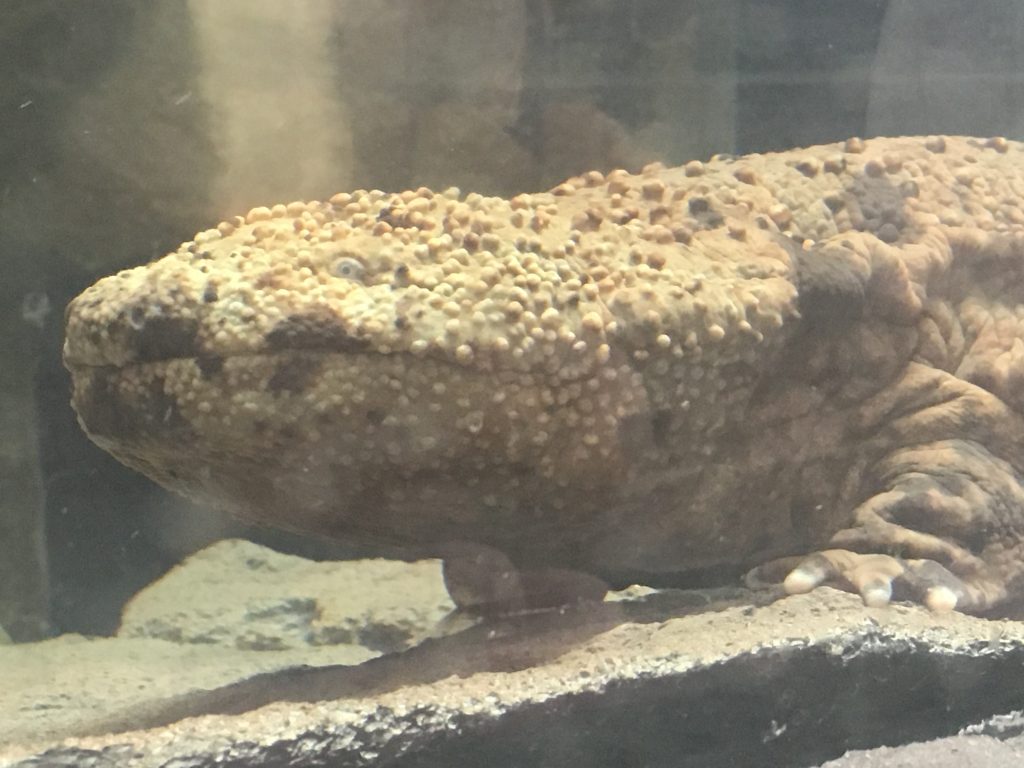
Japanese giant salamander, also known as Hanzaki, are seen here in this photo provided by the Hiroshima City Asa Zoological Park.
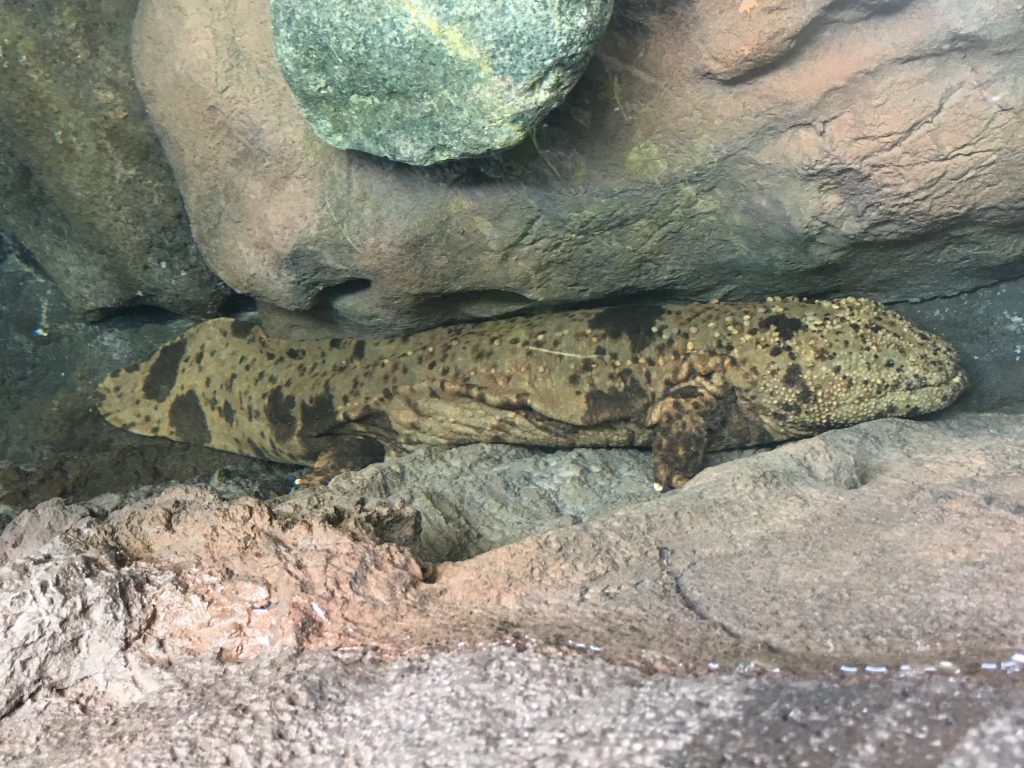
Japanese giant salamander, also known as Hanzaki, are seen here in this photo provided by the Hiroshima City Asa Zoological Park.
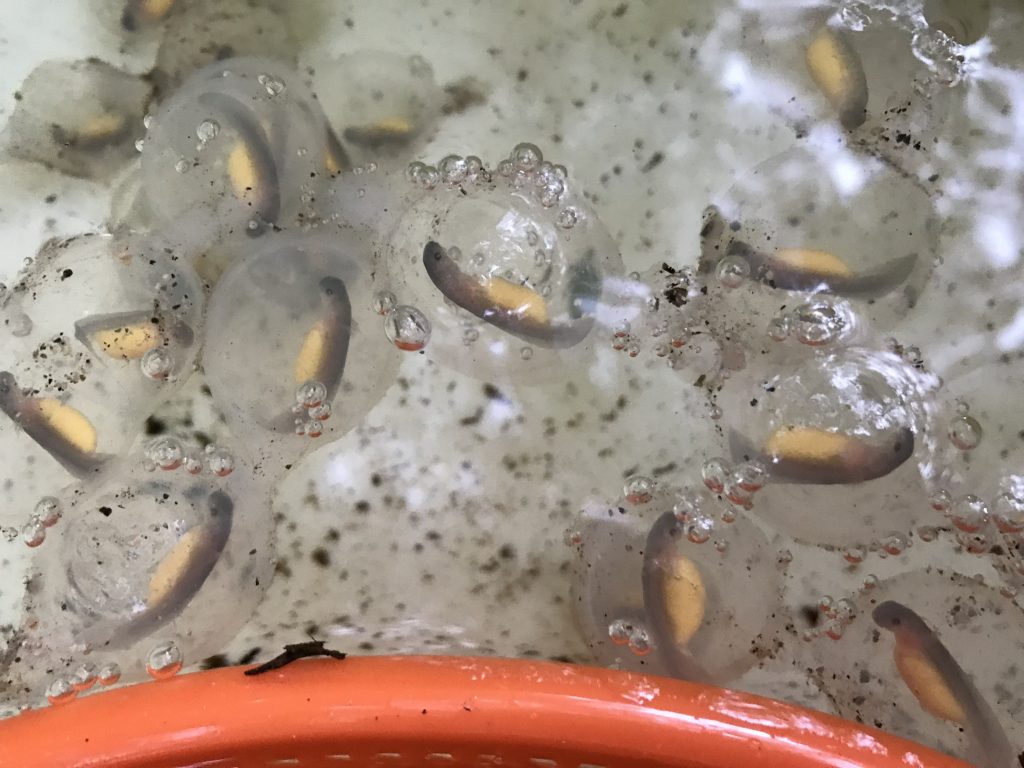
Japanese giant salamander eggs, also known as Hanzaki eggs, are seen here in this photo provided by the Hiroshima City Asa Zoological Park.
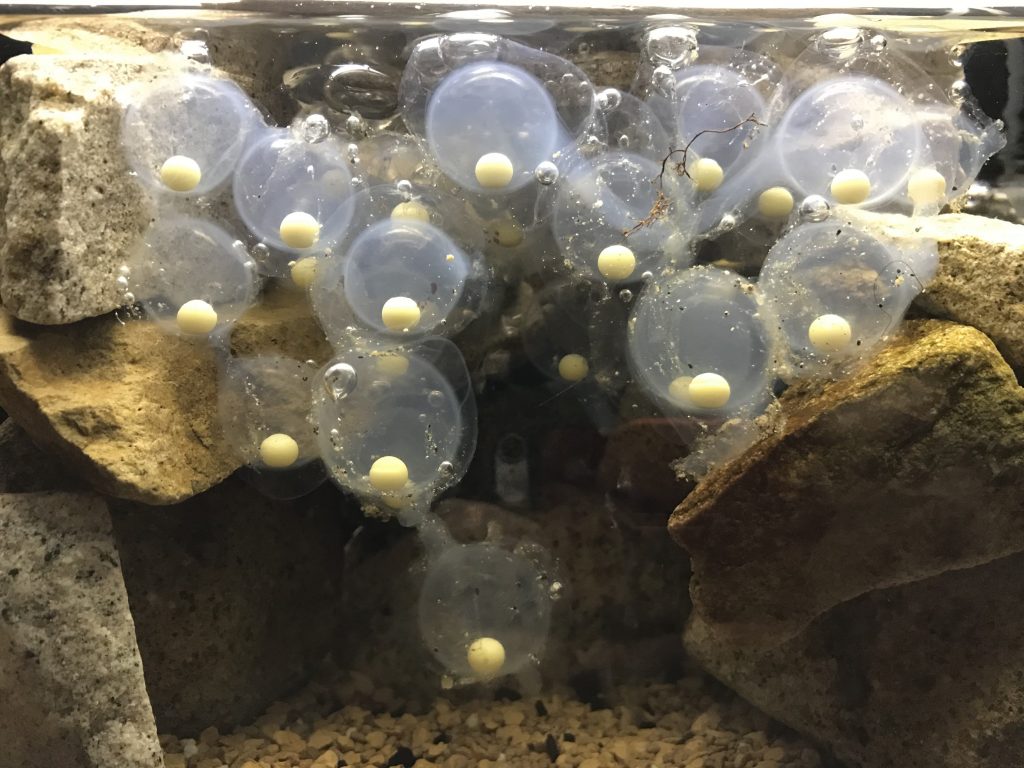
Japanese giant salamander eggs, also known as Hanzaki eggs, are seen here in this photo provided by the Hiroshima City Asa Zoological Park.
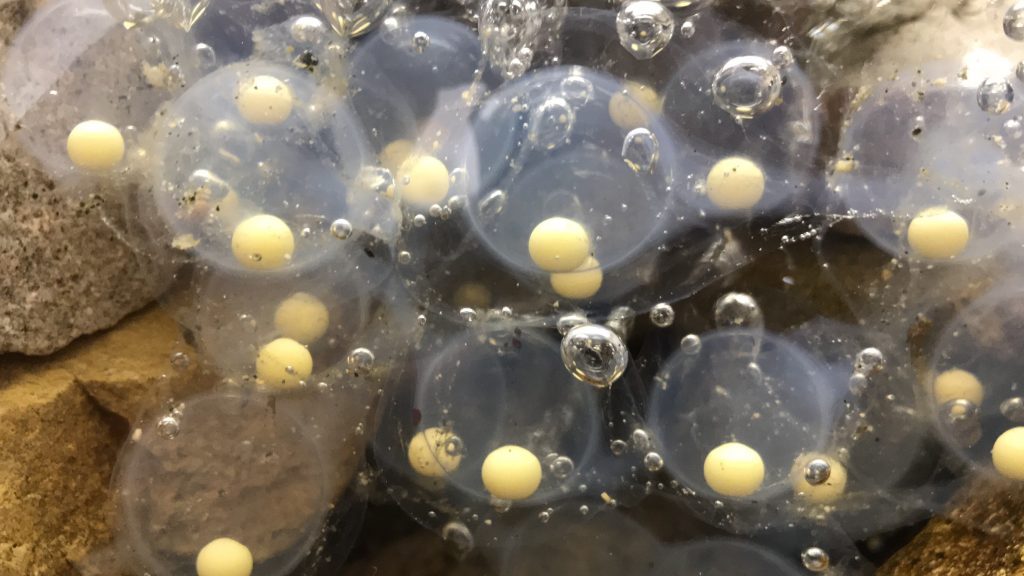
Japanese giant salamander eggs, also known as Hanzaki eggs, are seen here in this photo provided by the Hiroshima City Asa Zoological Park.











